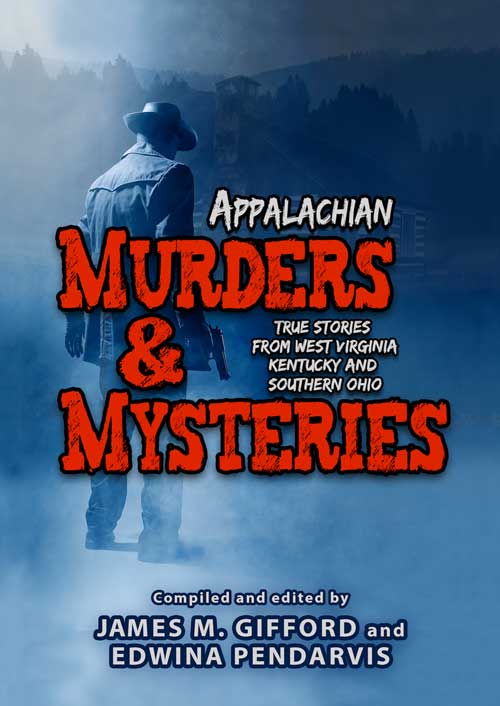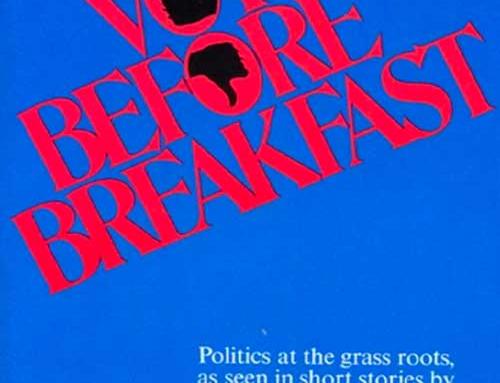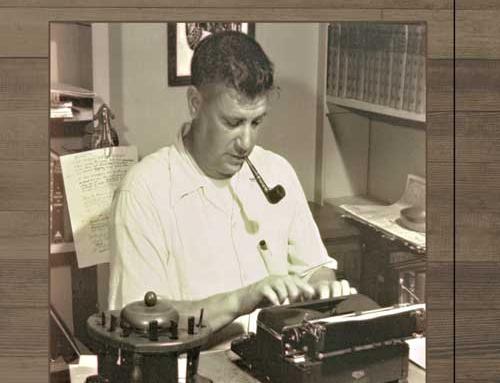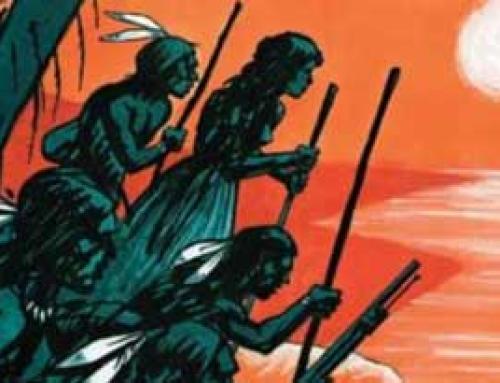Charles Manson was a sociopath, a criminal, and a lifelong predator. He achieved national and world-wide infamy as the leader of “the Manson family,” a commune of his murderous followers that developed in the late 1960s in the California desert. However, long before Charles Manson and his “family” captured national headlines with the horrific Tate-LaBianca murders, he was linked to eastern Kentucky by his biological family, which had strong ties to Ashland, Boyd County, and the Tri-State area.

Charles Manson’s 1968 Mug Shot.
Kathleen Maddox, the woman who became Charles Manson’s mother, came from a very conservative eastern Kentucky family. Her mother, Nancy Ingram, married World War I veteran Charles Milles Maddox, a “good provider” and a “solid citizen” according to Manson biographer Jeff Guinn. In the early years of their marriage, Nancy and Charles lived in Rowan County where their four children were born: Glenna in 1911; Aileen in 1913; Luther in 1915; and Ada Kathleen in 1918.
In 1928, Charles moved his family to Ashland and purchased a home on Hilton Avenue for $5,000. He had a dependable job as a conductor on the C&O Railroad and the family lived comfortably until Charles died of pneumonia in 1931.
Buoyed by her strong religious faith and a widow’s pension of $60 per month from the railroad, Nancy kept her children in school. Her daughter Aileen, a recent graduate of Ashland’s Booth Business College, died of pneumonia in 1933. These two deaths in a seventeen-month period intensified Nancy’s religious beliefs, and she became an enthusiastic member of the Nazarene Church. Nancy had two children at home and in school, and Luther and Kathleen (now known by her middle name) were raised to obey the strict rules of her church.
Kathleen rebelled against her mother’s rigid discipline and insisted on the right to go to dances. Other girls her age went to dances, wore makeup, and had their hair cut short. Kathleen just wanted to have a little fun. To escape her mother’s watchful eye, she began crossing the river bridge to Ironton. At Ritzy Ray’s, a popular dance club, Kathleen met twenty-three-year-old Colonel Scott (Colonel was his first name, not a military title). Kathleen began slipping off to Ironton to see her handsome boyfriend; by the spring of 1934 she was pregnant.
Colonel Scott immediately deserted his pregnant, fifteen-year-old girlfriend, who remained in her mother’s home. Oppressed by her mother’s constant admonitions and devastated that Colonel Scott had deserted her, on August 21, 1934, Kathleen married twenty-five-year-old William Manson, who probably knew that his bride was pregnant by another man. Because of the circumstances surrounding Kathleen’s pregnancy, her mother may have encouraged her daughter to relocate to the Northern Kentucky/Cincinnati area to have her baby.
Kathleen delivered a healthy baby boy in the Cincinnati General Hospital on November 12, 1934. The child’s birth certificate, filed about one month later, listed the baby boy’s name as Charles Milles Manson to honor his mother’s father. The baby’s father was listed as William Manson, an employee at a dry cleaners in Cincinnati. Although she was hurt by her daughter’s behavior, Nancy continued to love her daughter and adored her new grandson.
Sixteen-year-old Kathleen loved her baby, but she was hooked on a free-spirited lifestyle and began leaving infant Charlie with her mother or her sister Glenna or other less responsible baby-sitters while she frequented tri-state area bars. Grandmother Nancy worried about little Charlie.
Not surprisingly, Kathleen’s marriage of convenience quickly deteriorated and on April 30, 1937, William charged his wife with “gross neglect of duty” and an Ohio court granted a divorce that declared “there were no children the issue of this marriage.” William had no financial obligations to little Charlie, and Kathleen took back her maiden name and filed a “bastardy suit” against Colonel Scott, who did not deny that he was Charlie’s father. Following her divorce, Kathleen and Charlie lived with Nancy but often stayed with her sister Glenna and her husband and daughter in Charleston, West Virginia.
On the evening of August 1, 1939, Kathleen and another woman were at a bar in Charleston, where they met Frank Martin, a friendly fellow with a Packard convertible. Kathleen and her brother Luther lured Martin out of town and knocked him to the ground with a ketchup bottle, stole his wallet which contained only $27, and left Martin on the road while they drove away in his convertible. They were soon apprehended, tried, and convicted.
Nancy now had two major problems. She had four-and-a-half-year-old grandson Charlie to care for, and her two youngest children were being sent to Moundsville Prison, an overcrowded hellhole of torture, abuse, pestilence, poor food, and filth. While his mother was in prison, young Charlie was raised in eastern Kentucky and West Virginia.
More information about Manson’s ties to Ashland is contained in the twenty-three chapter anthology, “Appalachian Murders & Mysteries: True Stories from West Virginia, Kentucky and Southern Ohio” published by the Jesse Stuart Foundation in 2017.
For more information on this and other books about Kentucky and Appalachian crimes and mysteries, call the JSF Bookstore in Ashland at 606.326.1667 or e-mail jsf@jsfbooks.com.
By James M. Gifford
JSF CEO & Senior Editor
Charles Manson was a sociopath, a criminal, and a lifelong predator. He achieved national and world-wide infamy as the leader of “the Manson family,” a commune of his murderous followers that developed in the late 1960s in the California desert. However, long before Charles Manson and his “family” captured national headlines with the horrific Tate-LaBianca murders, he was linked to eastern Kentucky by his biological family, which had strong ties to Ashland, Boyd County, and the Tri-State area.
Kathleen Maddox, the woman who became Charles Manson’s mother, came from a very conservative eastern Kentucky family. Her mother, Nancy Ingram, married World War I veteran Charles Milles Maddox, a “good provider” and a “solid citizen” according to Manson biographer Jeff Guinn. In the early years of their marriage, Nancy and Charles lived in Rowan County where their four children were born: Glenna in 1911; Aileen in 1913; Luther in 1915; and Ada Kathleen in 1918.
In 1928, Charles moved his family to Ashland and purchased a home on Hilton Avenue for $5,000. He had a dependable job as a conductor on the C&O Railroad and the family lived comfortably until Charles died of pneumonia in 1931.
Buoyed by her strong religious faith and a widow’s pension of $60 per month from the railroad, Nancy kept her children in school. Her daughter Aileen, a recent graduate of Ashland’s Booth Business College, died of pneumonia in 1933. These two deaths in a seventeen-month period intensified Nancy’s religious beliefs, and she became an enthusiastic member of the Nazarene Church. Nancy had two children at home and in school, and Luther and Kathleen (now known by her middle name) were raised to obey the strict rules of her church.

Charles Manson’s 1968 Mug Shot.
Kathleen rebelled against her mother’s rigid discipline and insisted on the right to go to dances. Other girls her age went to dances, wore makeup, and had their hair cut short. Kathleen just wanted to have a little fun. To escape her mother’s watchful eye, she began crossing the river bridge to Ironton. At Ritzy Ray’s, a popular dance club, Kathleen met twenty-three-year-old Colonel Scott (Colonel was his first name, not a military title). Kathleen began slipping off to Ironton to see her handsome boyfriend; by the spring of 1934 she was pregnant.
Colonel Scott immediately deserted his pregnant, fifteen-year-old girlfriend, who remained in her mother’s home. Oppressed by her mother’s constant admonitions and devastated that Colonel Scott had deserted her, on August 21, 1934, Kathleen married twenty-five-year-old William Manson, who probably knew that his bride was pregnant by another man. Because of the circumstances surrounding Kathleen’s pregnancy, her mother may have encouraged her daughter to relocate to the Northern Kentucky/Cincinnati area to have her baby.
Kathleen delivered a healthy baby boy in the Cincinnati General Hospital on November 12, 1934. The child’s birth certificate, filed about one month later, listed the baby boy’s name as Charles Milles Manson to honor his mother’s father. The baby’s father was listed as William Manson, an employee at a dry cleaners in Cincinnati. Although she was hurt by her daughter’s behavior, Nancy continued to love her daughter and adored her new grandson.
Sixteen-year-old Kathleen loved her baby, but she was hooked on a free-spirited lifestyle and began leaving infant Charlie with her mother or her sister Glenna or other less responsible baby-sitters while she frequented tri-state area bars. Grandmother Nancy worried about little Charlie.
Not surprisingly, Kathleen’s marriage of convenience quickly deteriorated and on April 30, 1937, William charged his wife with “gross neglect of duty” and an Ohio court granted a divorce that declared “there were no children the issue of this marriage.” William had no financial obligations to little Charlie, and Kathleen took back her maiden name and filed a “bastardy suit” against Colonel Scott, who did not deny that he was Charlie’s father. Following her divorce, Kathleen and Charlie lived with Nancy but often stayed with her sister Glenna and her husband and daughter in Charleston, West Virginia.
On the evening of August 1, 1939, Kathleen and another woman were at a bar in Charleston, where they met Frank Martin, a friendly fellow with a Packard convertible. Kathleen and her brother Luther lured Martin out of town and knocked him to the ground with a ketchup bottle, stole his wallet which contained only $27, and left Martin on the road while they drove away in his convertible. They were soon apprehended, tried, and convicted.
Nancy now had two major problems. She had four-and-a-half-year-old grandson Charlie to care for, and her two youngest children were being sent to Moundsville Prison, an overcrowded hellhole of torture, abuse, pestilence, poor food, and filth. While his mother was in prison, young Charlie was raised in eastern Kentucky and West Virginia.
More information about Manson’s ties to Ashland is contained in the twenty-three chapter anthology, “Appalachian Murders & Mysteries: True Stories from West Virginia, Kentucky and Southern Ohio” published by the Jesse Stuart Foundation in 2017.
For more information on this and other books about Kentucky and Appalachian crimes and mysteries, call the JSF Bookstore in Ashland at 606.326.1667 or e-mail jsf@jsfbooks.com.
By James M. Gifford
JSF CEO & Senior Editor





